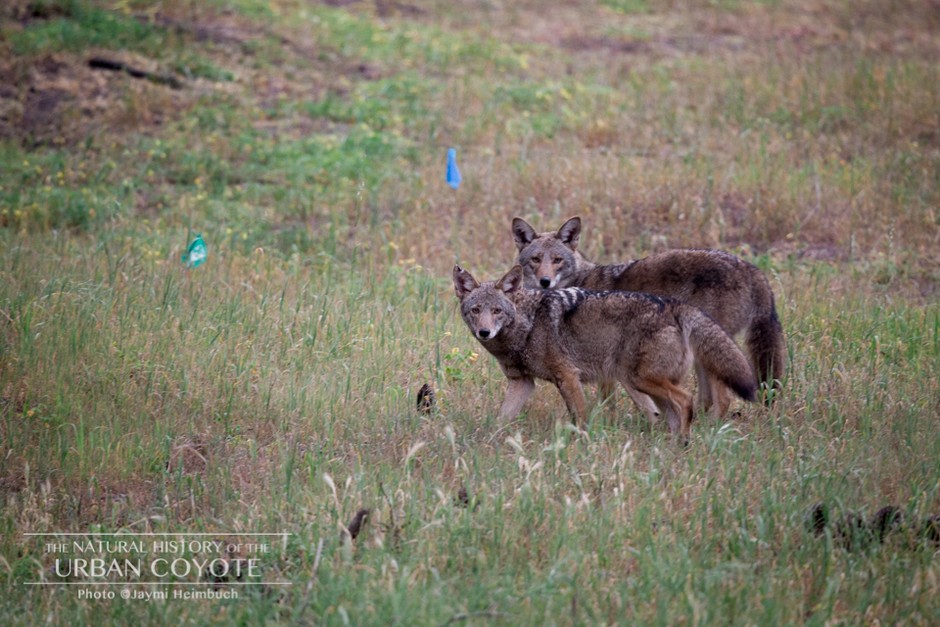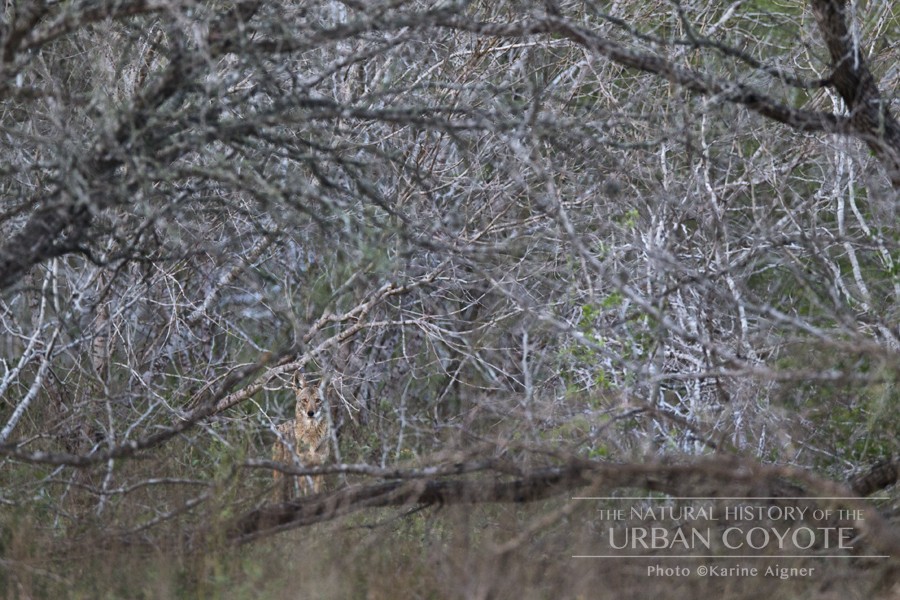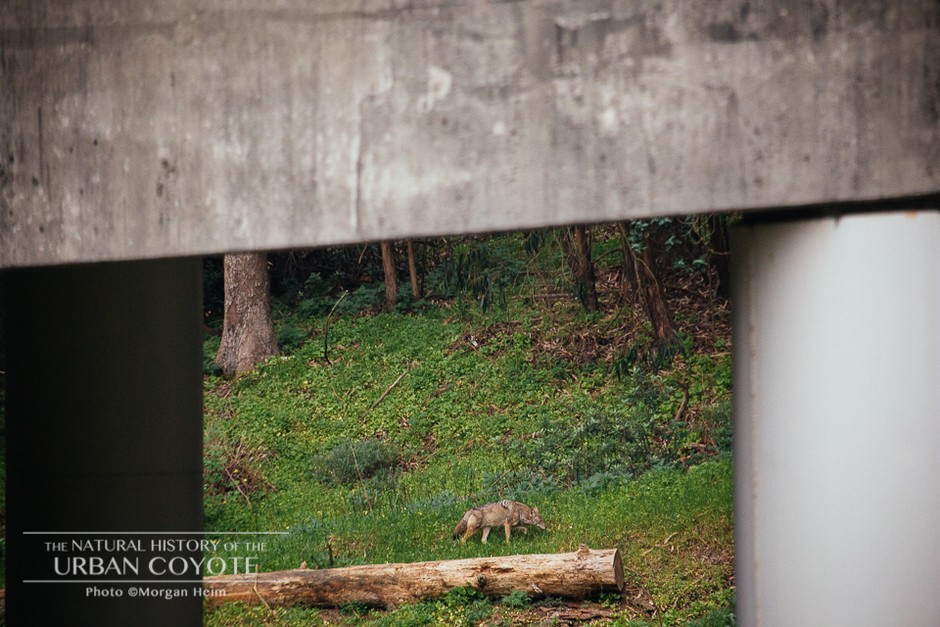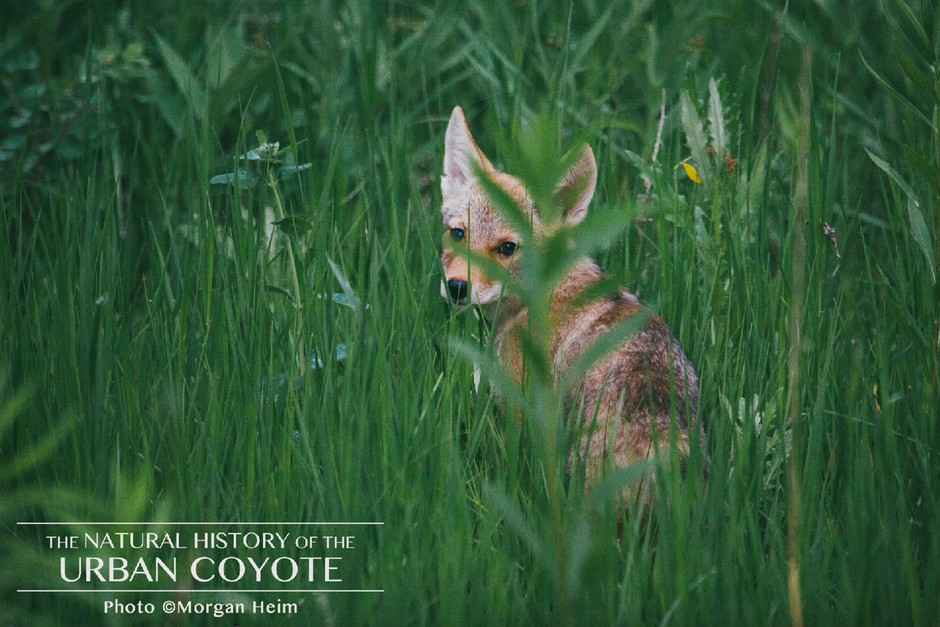Understanding Urban Coyotes, One Photo at a Time
A new photojournalism project documents the quiet spread of these maligned predators into cities.

It was before sunrise the first time Jaymi Heimbuch saw a coyote. As she and a friend pulled into a parking lot, their headlights beamed onto a single Canis latrans, drinking from a puddle. "I was like, you are kidding me!" recalls Heimbuch, a writer and conservation photographer. "It was like a sign."
It was a sign because that day also marked Heimbuch's inaugural photography mission for a photojournalism project she had started called The Natural History of the Urban Coyote.

The idea was born two years ago, but Heimbuch and her two partners, multimedia journalist Morgan Heim and wildlife photographer Karine Aigner, officially launched their website in mid-February of this year. Their timing is opportune, coming at a moment when coyotes are so plentiful in cities that they are finding their way to rooftops in New York and roaming college campuses in Vancouver.
Combining the latest urban coyote research with photographs taken by the trio, the project aims to build a bridge between the general public and scientists to dispel the "mysteries and misconceptions" about a species that's often maligned and persecuted. What that translates to currently is a website that will act as a hub for coyote information, provided through blog posts and images updated several times a month. The three documentarians also plan to write magazine articles, publish a book (something Heimbuch says is "already in the works"), and release a documentary film.
To begin, the project will focus on coyotes in three cities: San Francisco, Denver, and New York. A few other locations, including Vancouver, are on the shortlist for inclusion once the project develops further.

But coyotes are certainly not the only urban species in need of advocates. Cities are full of contentious species that alternately—and sometimes all at once—inspire rage, disgust, and fear. So, when I spoke to Heimbuch last week, I wanted to find out: Why coyotes?
"Coyotes are one of those amazing natural history stories that you don't hear terribly often when it comes to a predator, especially a larger predator," says Heimbuch. Their trajectory has been markedly different from that of other large predators in North America. As noted by the Cook County Coyote Project, while bears and wolves have been forced out of much of the United States by human expansion, coyotes have managed to broaden their range dramatically over the past three centuries. This has happened in spite of the active persecution they have frequently faced from fearful humans.
"The more forests we cut down, the more we basically pave the way for them to arrive right at our doorstep," says Heimbuch.
But Heimbuch's interest is about more than just coyote tenacity and resilience. "I also find them inspirational because they're so clever," she says. "They can just figure out solutions to problems. They surprise us constantly in how they can adapt to different areas." Notably, coyotes have learned to navigate busy streets (which Heimbuch writes about witnessing in this blog post) and to patch together territories out of the disjointed green spaces in cities.

Heimbuch is effusive about coyotes, but she doesn’t necessarily expect others to share her enthusiasm. That’s neither her goal nor the goal of The Natural History of Urban Coyotes. Rather, the focus is on understanding and consequently reducing human-coyote conflict.
“We don’t really care if we’re changing how [people] feel about coyotes,” she says. “But we can hopefully change how they think about them and how they coexist with them.”











No comments:
Post a Comment